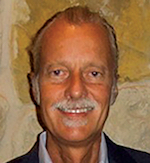Thursday, October 21, 2021
 Guy Antonioli Guy Antonioli |
Communications around the necessity for COVID-19 vaccinations haven’t only been inconsistent and unclear, but more importantly, the content behind these messages has failed to explain the acuteness of the threat and has missed critical audiences.
As a result, federal, state and local governments have proceeded with mandates or guidelines that are similarly inconsistent, creating confusion resulting in an increase in the spread of the virus; and unfortunately politicizing the worst pandemic our country and the world have seen in more than 100 years, affecting all ethnic and socioeconomic segments of the population. It’s not enough for the messaging to create awareness for the topic, if it doesn’t strike a chord that makes the consumer change their behavior.
Successful communication must convey rational information while at the same time have an emotional effect on the audience that will motivate them to react and change their attitude and behavior. In advertising, it’s known as creating a credible reason with an emotional appeal that culminates in a Call-To-Action for the consumer.
This article is featured in O'Dwyer's Oct. '21 Healthcare & Medical PR Magazine
(view PDF version) |
| |
Unfortunately, public healthcare messaging that addresses topics which would benefit from a change in consumer behavior has often been done in a tone that’s too mild, resulting in little impact. Two examples are Anti-Smoking and Weight Loss that affect multicultural populations alike.
There were many ineffective Anti-Smoking campaigns, but it wasn’t until the famous “Body Bags” campaign showing the hundreds of deaths to smokers, that people began to take notice and government regulations were put in place that prohibited smoking in public places. Since then, anti-smoking campaigns have been very graphic, showing photographs of people when they were young and beautiful to video images of them now on ventilators, using oxygen tanks and even voice assistance devices, or missing part of their face lost to cancer, and even stating that the person in the advertisement died.
In other words, scaring people away from smoking!
Today, after several years of strong, impactful consistent messaging, we are finally witnessing a drop in the number of people who smoke, and smoking is viewed by a majority as a nasty habit.
On the other hand, the United States is the country with the most overweight population, despite multiple campaigns addressing its consequences—diabetes, high blood pressure, coronary heart disease, strokes, etc.—and companies selling products and systems to help people lose weight. Unfortunately, many Americans continue to indulge in behavior and eating habits that only worsen the problem. In my view, the reason is the messaging, while backed by rational statistics, hasn’t been emotional enough to call people to action and make them change their eating habits, activities or to exercise more.
Until the CDC and governments at all levels—Federal, state and local—are communicating the same message about the need and reasons to get vaccinated against COVID by clearly explaining the benefits of doing so and the consequences of not getting vaccinated, the confusion, distrust and, unfortunately, political polarization will continue.
Perhaps the communications strategy needs to change and be more demonstrably graphic showing the damage COVID causes, the reliance upon ventilators and clearly stating the number of deaths—soon to reach 700,000—due to COVID. I might even go one step further and even include a statement that one’s liberty exists as long as it doesn’t hurt others.
***
Guy Antonioli is President and Founder of GCA Consulting / Focus Latino.